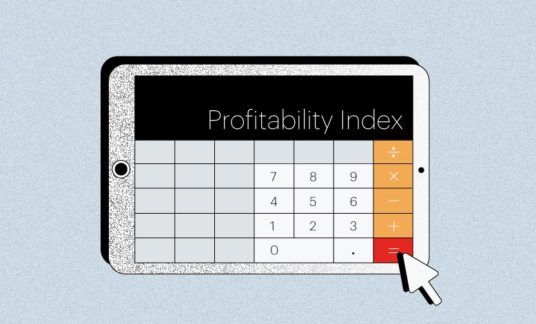Disclaimer: While this article discusses employment agreements in general legal terms, this isn’t legal advice. It’s recommended you consult with licensed legal counsel before entering an employment agreement.
An employment contract is a legal document between an employer and an employee. Signed by both parties, it controls the rights and responsibilities of both the company and the employee.
While employment agreements aren’t mandatory for employers, you might find it helpful to make signing a contract part of an employee’s onboarding process.
Let’s go through why you need an employment contract and its benefits and potential drawbacks. We’ll also look at where to find employment agreement template examples and what to do in case of a contract breach.
What Is an Employment Contract?
An employment contract is an individual agreement between a company and a worker. It isn’t a blanket agreement that governs employment for all employees, such as a union contract. Instead, as an individual agreement, it allows the two parties to negotiate terms and conditions.
An employment contract can also be referred to as an employment agreement or contract of employment.
The legal aspects of an employment contract include the following:
- Wages and Compensation: This would enumerate salary or hourly rates, bonuses, incentives and other forms of compensation. For example, it could list specific predetermined salary increases on anniversary dates or other review periods.
- Benefits: A contract will explain the benefits provided by the company. This can include health and dental insurance, paid time off, 401(k) savings programs or other defined benefits plans.
- Term of Employment: The employment contract will specify the duration of the agreement and may include renewal terms or post-employment agreements.
- Job Responsibilities: The employment agreement typically includes language specifying a job title or duties along with the general responsibilities expected as a condition of employment.
- Confidentiality: It can include some form of a confidentiality agreement or non-disclosure agreement.
- Business Protection: Most contracts will address ownership of work products and protection for a company’s proprietary information. In addition, some agreements will contain provisions that govern what employees can do after leaving a company. Often called a non-compete agreement or restrictive covenant, a company might require an employee to refrain from doing business with clients or hiring away employees for a specified period after their employment ends.
- Termination Conditions: Some employers will list the specific items that will lead to termination, such as misconduct, insubordination, falsifying records, poor performance, theft or a variety of other offenses. It may include provisions about what happens to the agreement if there are company layoffs or if the business is sold.
- Dispute Resolution: The contract will likely contain a predetermined method for resolving disputes related to employment, such as mediation or arbitration. In addition, it may mandate that disputes are handled in specific jurisdictions.
Different employers may have industry-specific clauses. There are no minimum requirements for an employment contract as long as it conforms with the law.

Types of Employment Contracts
There are 4 types of employment contracts:
- Written Contract: This type is the best way to define the working relationship so that both sides clearly understand what’s expected. Written agreements may cover full-time or part-time employment, temporary employment periods or a defined scope of work.
- Oral Contract: Oral contracts are enforceable but can lead to misinterpretations and can be difficult to prove if they are called into question.
- Implied Contract: This is inferred by employees based on promises made, job reviews or employee handbooks. It’s not a written agreement.
- At-will: The majority of people in the United States work at will. They can leave their job at any time or be terminated for any legal reason or no reason at all. There are exceptions on a state-by-state basis. For example, Montana has a probationary period regulation that prevents employers from firing someone for no reason after they’ve completed a probationary period of 6 months on the job.
Why It’s Important to Have an Employment Agreement
A simple employment contract protects your rights and interests as well as your employees’. Here are some of the benefits of a solid agreement:
- Clarifies the Job’s Key Aspects: The employment contract defines the job, responsibilities and benefits. It creates clear expectations for both parties and avoids confusion about important issues.
- Help Guard Against Competitors: It can prevent your competitors from stealing your best employees. Even if your worker leaves the company, you might be able to prohibit them from working with your clients or competitors for a defined time, depending on your state laws. The work contract agreement can also prohibit employees from disclosing trade secrets from your business. It can also work to avoid disputes over things such as copyrights, patents, or work products.
- Helps Manage Employee Performance: By clearly defining terms and expectations, you can better manage the way your employees work. When it becomes apparent workers are not living up to their side of the agreement, it may make it easier to discipline or terminate an employee that is not meeting the standards.
Employment Contract Drawbacks
While a contract can bring security and clarity to the employer-employee relationship, the terms can also present a challenge if you need to change your business or a specific position.
Depending on what’s in the agreement, you might need to renegotiate a contract if you need to make a material change. It also might limit an employer’s right to terminate an employee during the term of the agreement without cause.

Where to Get Employment Contract Templates
For a simple employment agreement template, consider sites such as LawDepot and Legal Templates, which will guide you through a series of questions to fill in key provisions of the employment contract template. LawDepot is free to use. Legal Templates has a free trial period and then charges a $59.95 fee per form.
Employers are subject to both federal and state laws governing the employer-employee relationship. As such, the legal form you use will need to address any state-specific requirements. Both LawDepot and Legal Templates allow you to pick your state to customize the agreement appropriately.
Other sources for an employment contract template include Legal Zoom, Rocket Lawyer and eForms. Some sites offer a free employment contract, while others require payment. You can use the templates as only examples of employment contract terms or inspiration and craft your work agreement for new employees.
Breach of Employment Contract
A work contract agreement is a legal document. That means breaching the terms has legal consequences. Even a simple employment contract will detail what happens if the contract is breached and may spell out remedies. Some contracts include clauses that give either side what’s known as a “cure” period. This is a defined time that the breaching party has to cure — or fix — the breach.
If one party breaches the terms of the agreement, the other side can sue for damages, which might include financial harm caused by the breach.
For example, if a company fails to pay an employee the compensation in the contract, an employee might sue. An employee also might sue for reinstatement and back pay if they feel they’ve been wrongfully terminated.
Employers have rights as well. For example, they could recover compensatory damages from employees if they don’t meet the employment agreement’s terms.
Case in point, employers might be able to sue for loss of revenue if a contracted employee takes a job somewhere else before the term is up or if they violate any post-employment provisions such as nonsolicitation of clients.










